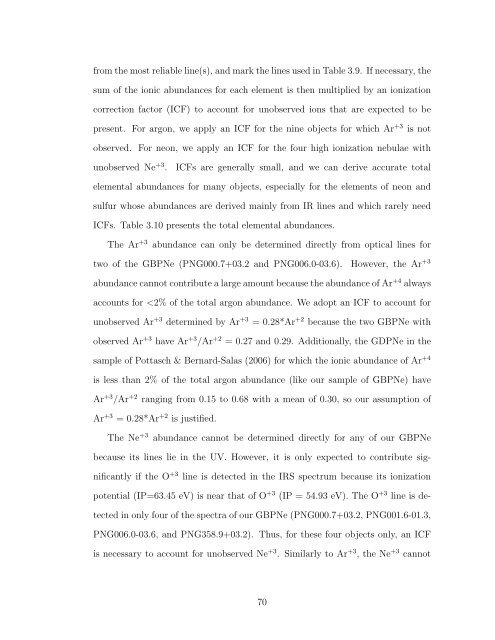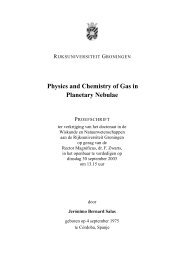TRACING ABUNDANCES IN GALAXIES WITH THE SPITZER ...
TRACING ABUNDANCES IN GALAXIES WITH THE SPITZER ...
TRACING ABUNDANCES IN GALAXIES WITH THE SPITZER ...
You also want an ePaper? Increase the reach of your titles
YUMPU automatically turns print PDFs into web optimized ePapers that Google loves.
from the most reliable line(s), and mark the lines used in Table 3.9. If necessary, the<br />
sum of the ionic abundances for each element is then multiplied by an ionization<br />
correction factor (ICF) to account for unobserved ions that are expected to be<br />
present. For argon, we apply an ICF for the nine objects for which Ar +3 is not<br />
observed. For neon, we apply an ICF for the four high ionization nebulae with<br />
unobserved Ne +3 . ICFs are generally small, and we can derive accurate total<br />
elemental abundances for many objects, especially for the elements of neon and<br />
sulfur whose abundances are derived mainly from IR lines and which rarely need<br />
ICFs. Table 3.10 presents the total elemental abundances.<br />
The Ar +3 abundance can only be determined directly from optical lines for<br />
two of the GBPNe (PNG000.7+03.2 and PNG006.0-03.6). However, the Ar +3<br />
abundance cannot contribute a large amount because the abundance of Ar +4 always<br />
accounts for













